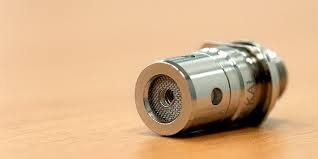MTL (Mouth-to-Lung) vaping has gained popularity among vapers for its similarity to traditional smoking and the satisfaction it offers. An essential component of MTL vaping is the sub-ohm coil, which plays a significant role in determining the overall vaping experience. In this article, we will delve into the diverse world of sub-ohm coils used in MTL vape devices. We will explore the variations in coil resistance, materials, wicking, and airflow control to help you understand the differences and select the ideal sub-ohm coil for your MTL vaping needs.
Coil Resistance:
Sub-ohm coils for MTL vaping typically have resistance levels ranging from 0.6 to 1.2 ohms. The higher resistance coils provide a tighter draw, replicating the sensation of a traditional cigarette. Lower resistance coils offer a looser draw and increased vapor production. It is crucial to find the resistance that suits your preferred vaping style and throat hit.
Coil Materials:
Sub-ohm coils for MTL vaping can be made from various materials, including Kanthal, stainless steel (SS), and nichrome (Ni80). Kanthal is a widely used coil material known for its durability and ability to produce consistent flavor. Stainless steel provides a cleaner flavor and offers the advantage of temperature control capabilities. Nichrome coils heat up rapidly, resulting in faster ramp-up time and intense flavor.
Wicking Material:
Sub-ohm MTL coils employ different wicking materials, commonly organic cotton or a blend of cotton and other absorbent materials. Organic cotton is favored for its excellent flavor transmission and efficient absorption properties. Some manufacturers incorporate additional materials, such as wood pulp or flax fiber, to enhance wicking speed and longevity.
Airflow Control:
MTL vape devices with sub-ohm coils often feature adjustable airflow control, allowing users to customize the draw resistance. Some coils offer restricted airflow, mimicking the tight draw of a traditional cigarette, while others provide a more open airflow for a smoother inhale. Experimenting with different airflow settings can help fine-tune your MTL vaping experience.
Coil Configurations:
Sub-ohm MTL coils come in various configurations, such as single-coil, dual-coil, or mesh designs. Single-coil setups are popular for their simplicity and efficient vaporization, providing a balance between flavor and vapor production. Dual-coil configurations offer increased vapor production and enhanced flavor saturation. Mesh coils, with their larger heating surface area, deliver intense flavor and rapid heat-up time.
Power Range:
Sub-ohm MTL coils have recommended power ranges provided by the manufacturer. It is important to operate the coil within these specified limits to ensure optimal performance and prevent premature coil failure. Adhering to the recommended power range ensures a satisfying MTL vaping experience and prolongs the coil's lifespan.
Conclusion:
The diverse array of sub-ohm coils available for MTL vaping allows vapers to tailor their experience to their preferences. By understanding the differences in coil resistance, materials, wicking, airflow control, and coil configurations, you can select the ideal sub-ohm coil that suits your desired draw, flavor intensity, and vapor production. Experimentation and finding the perfect combination will help you achieve a fulfilling MTL vaping experience. Remember to follow manufacturer guidelines and prioritize safety for an enjoyable and satisfying journey into MTL vaping.
